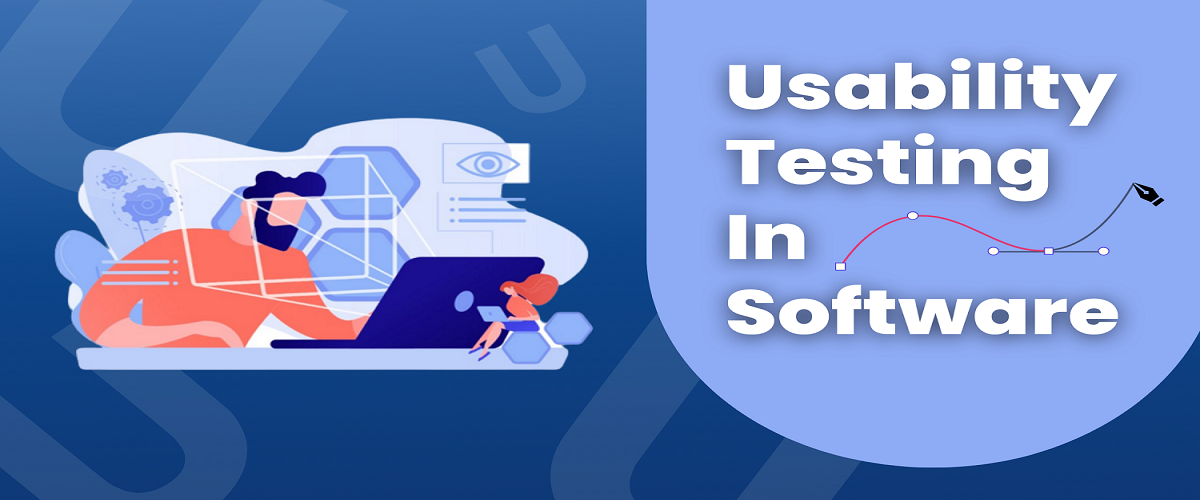What is Usability Testing?
Usability Testing is performed to test the usability of the software as a user. It mainly focuses on the user’s flexibility, control, and ease while using the software. Ui Designers design according to aesthetic values, and Developers develop that way. But the most important thing for software is its usability, so to keep that thing in check, it becomes vital to check for the ease of usability to the end user.
Why Usability Testing?
The purpose of usability testing is to ensure that the software’s functions and features are in line or not by testing it with real users. Usability testing gives you an insight into the user completely. It provides data about what the user needs, how the user will behave, and which features and commands will work and which will not. It gives you the heatmap of the whole software to better understand it.
The major reason for usability testing to be successful is that it is data-driven and human-centric, thus making it reliable and on-point. Because if the foundation of the software is perfect that everything eventually falls apart on your side.
#1- Efficient & Accurate
Usability testing, along with automation testing, improves the efficiency of the software by reducing unnecessary things and streamlining the process. It eventually improves the accuracy as well. It also checks that no broken links or outdated data should be there. With the best automation testing tools, the task becomes even easier.
#2- Save Time & Resources
By performing usability testing pre-launch, you can predict the user’s interaction with the software. Thus, helps you design the software more wisely and precisely. This saves you a lot of time in potential errors and improvements. It will also give early users and even investors (if you plan to raise another round after launch) a more refined product rather than just a beta model. Majorly it will help you by reducing the rework, which eventually leads to saving you lots of time and money.
#3- Data-Driven User-Friendly Design
No matter how hard you study the market, how better you understand the persona of your target audience, and how hard you strategize the product, the end user will always be the final examiner and most of the time businesses get surprised by the outcomes of the end user. It is because all of their assumptions got wrong. The plan on the paper and the actual market, both give different results. So, it is a wise choice to test your product at an early stage to design and strategize further moves based on data. There is also a saying that “Data Never Disappoints” and you can count on it.
How is it performed?
There are several ways to conduct usability testing. Different people perform it in many different ways, but there is a general and most known process to perform usability testing.
A. Test Planning
This is the first and foremost step in usability testing. In this step, The project manager conducts a meeting and discusses with the QA team the testing process, aim, use of resources, and timeline, and strategizes it keeping the user in mind and according to the business objectives.
B. Aligning Tasks
After preparing the blueprint of the project, the manager aligns resources with the timeframe and chooses the right tools for the process. Then he creates an ideal test scenario and prepares the team for the execution.
C. Test Execution
In this step, the test scenarios got executed and many things like effectiveness, efficiency, and error frequency got captured along with the process. After all the execution steps the data is gathered and projected for analysis.
D. Data Analysis & Examination
The data of usability test results are analyzed in-depth and categorized into certain patterns. It gets examined from different perspectives and then they make a final report.
E. Test Report
They prepare a detailed report including all the observations during the test, followed by finding and the final concussion. The actionable recommendations and their effect on the overall software are also mentioned in the report. They create reports according to the business objectives and client expectations.
Usability Testing Benefits
The major benefit of usability testing is to craft the software in a way that provides an ease to the user. Also, there are many benefits to usability testing…
- Identify user requirements and interaction
- Gives insightful data
- Helps you to make better decisions
- Effectively improve the usability
- Improve the quality
- Make the software more accurate and efficient
- Helps reduce the rework and development time
- Helps you to reduce the cost
Conclusion
After understanding in detail what usability is, how it works and its benefits, perform usability testing before the launch and serve the best to your clients.















